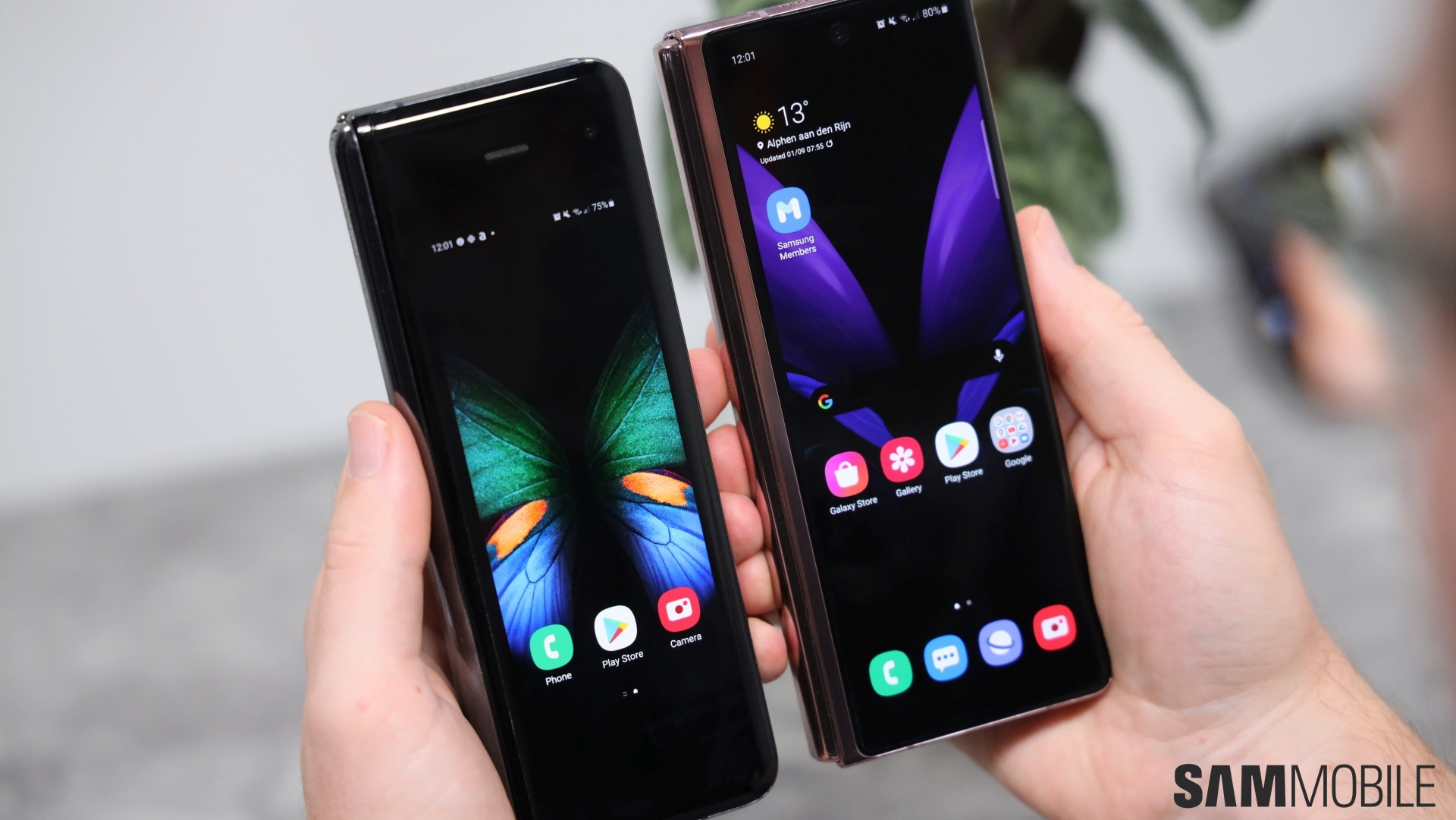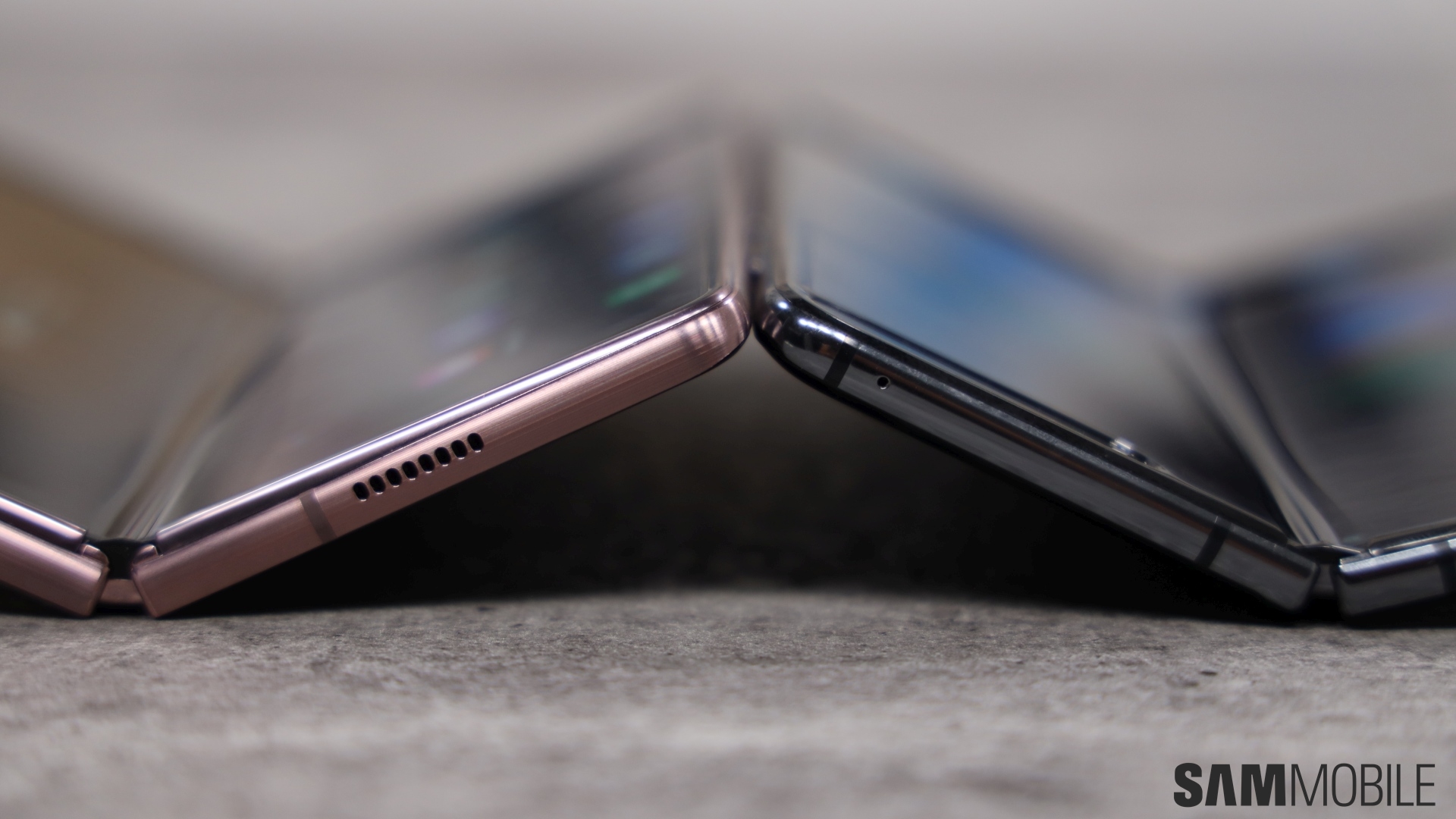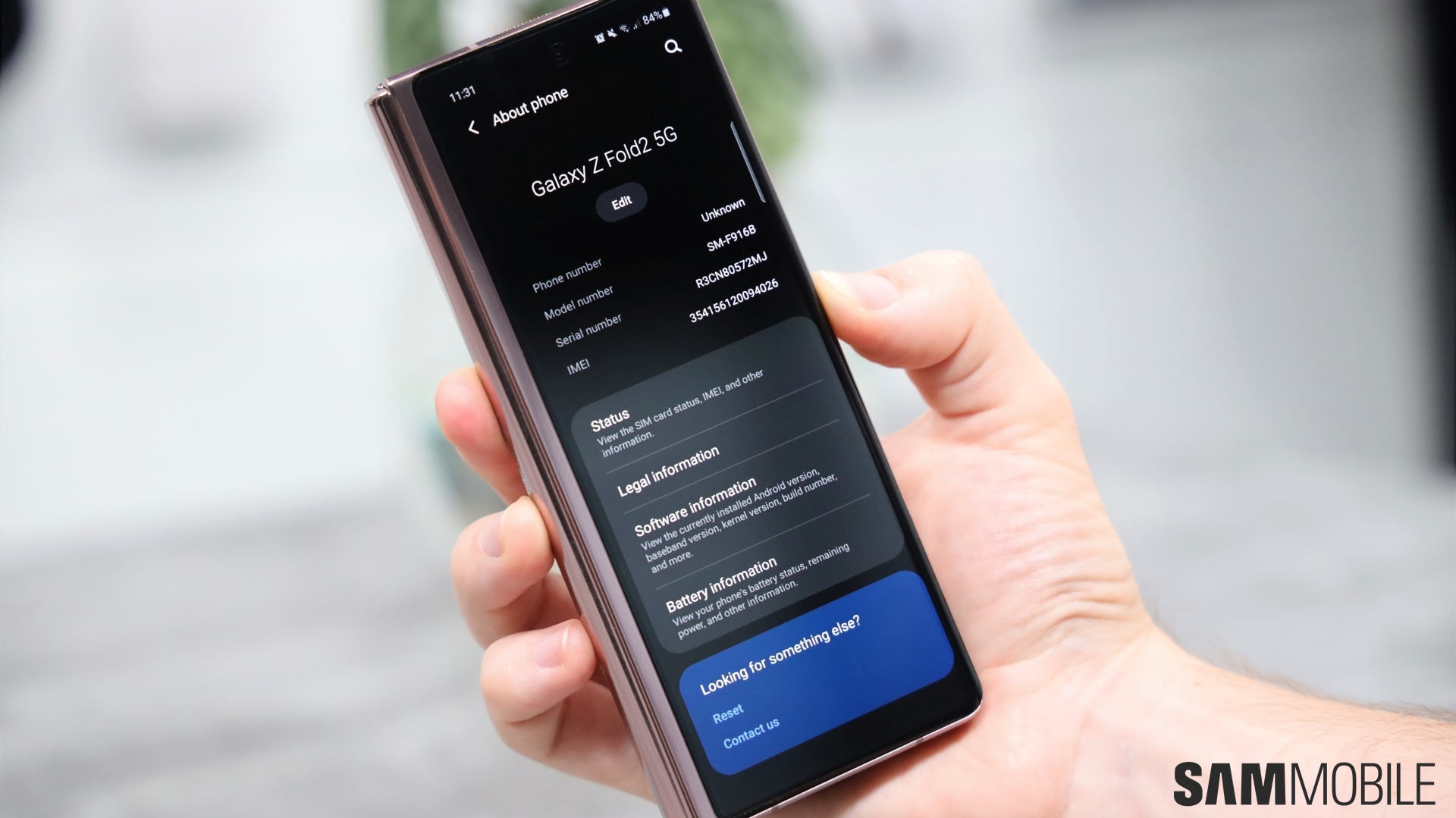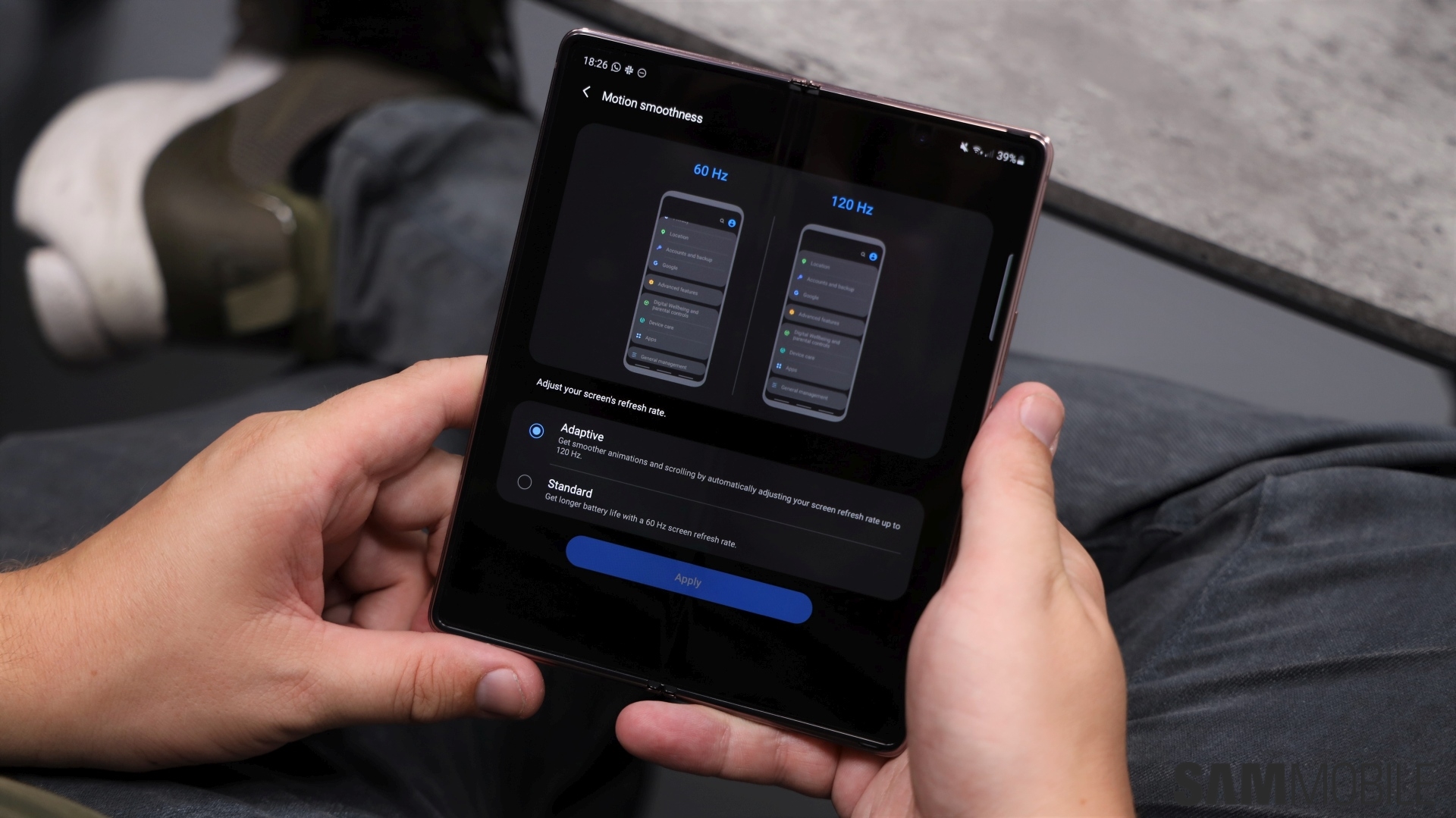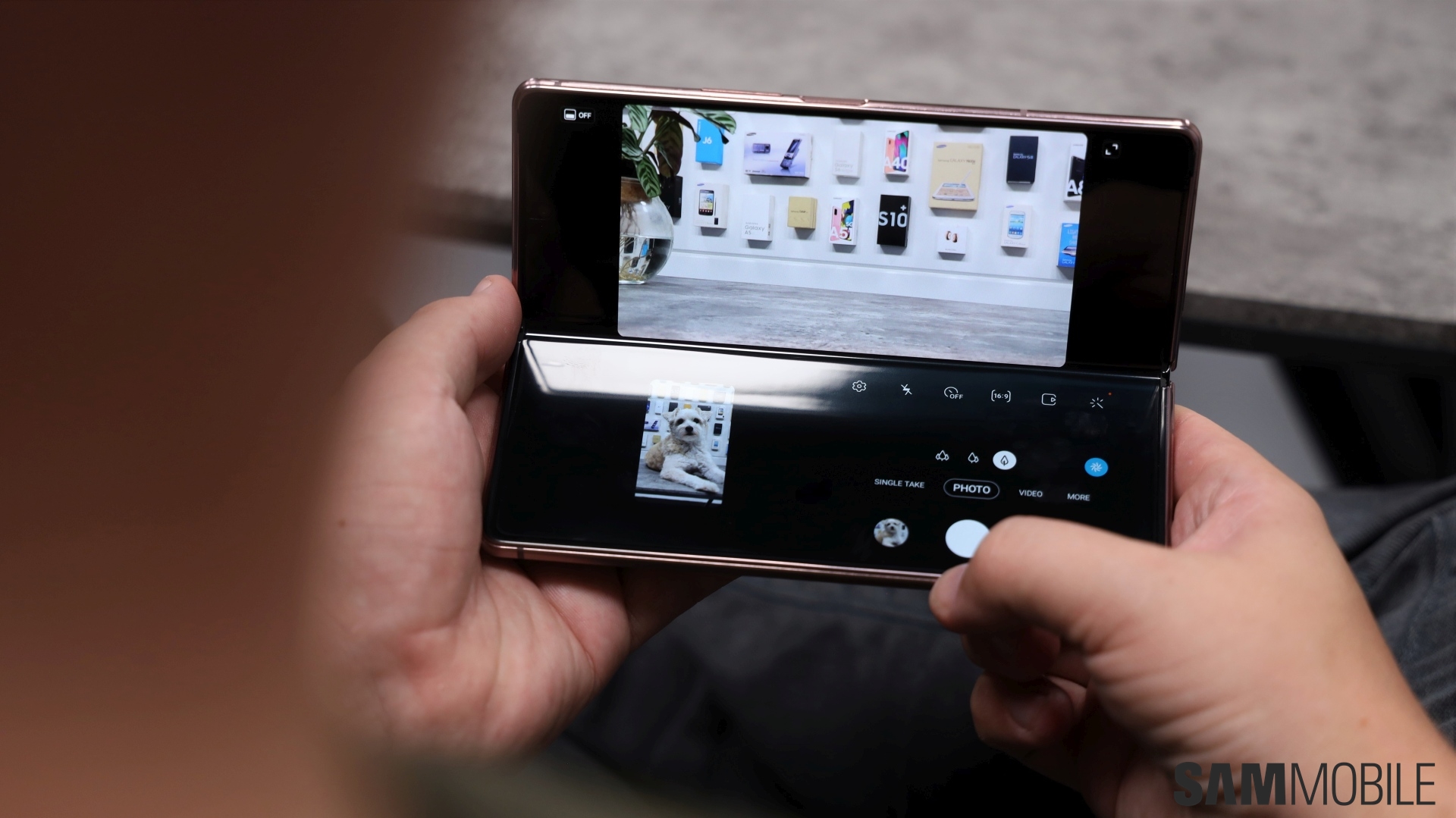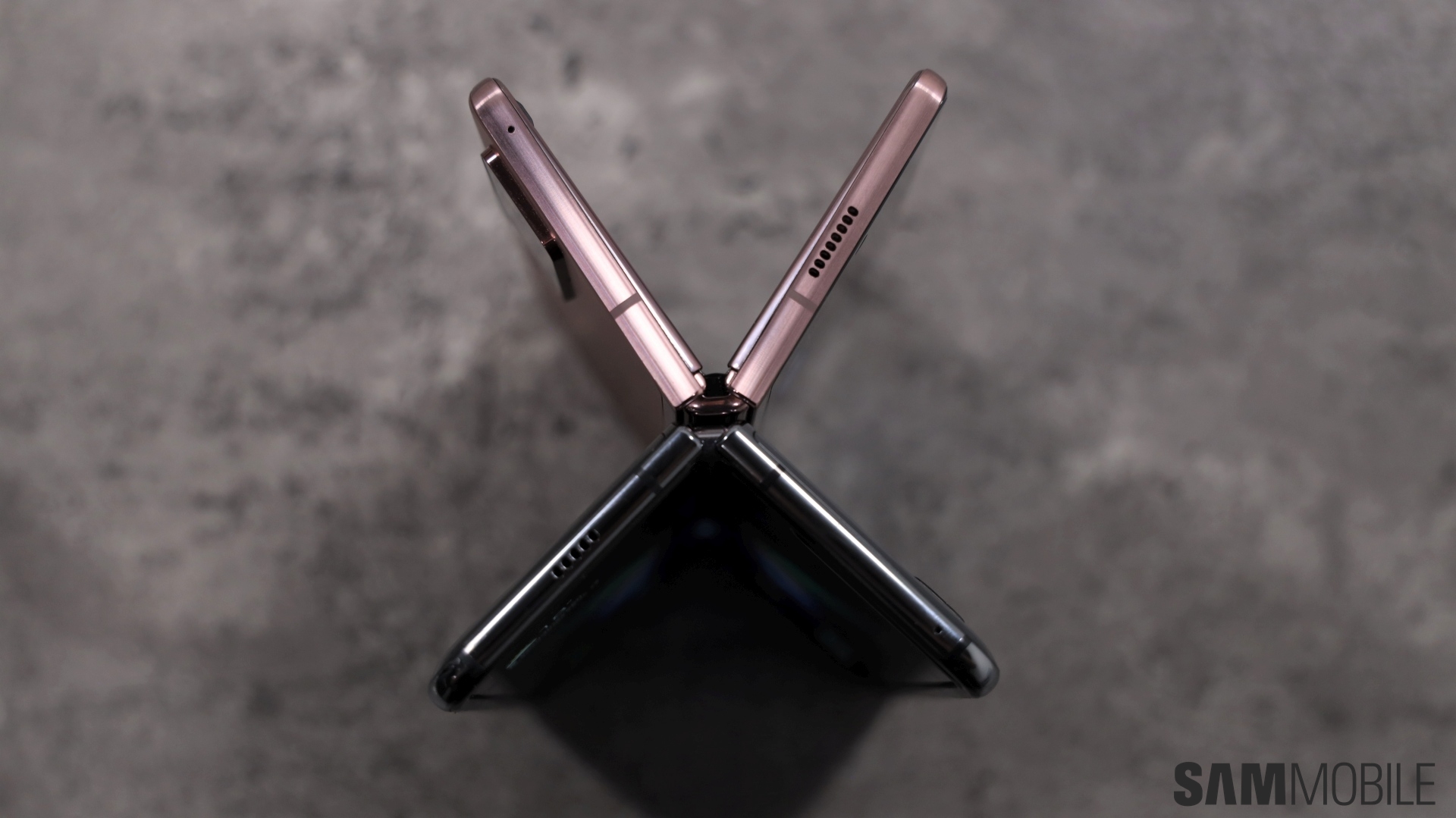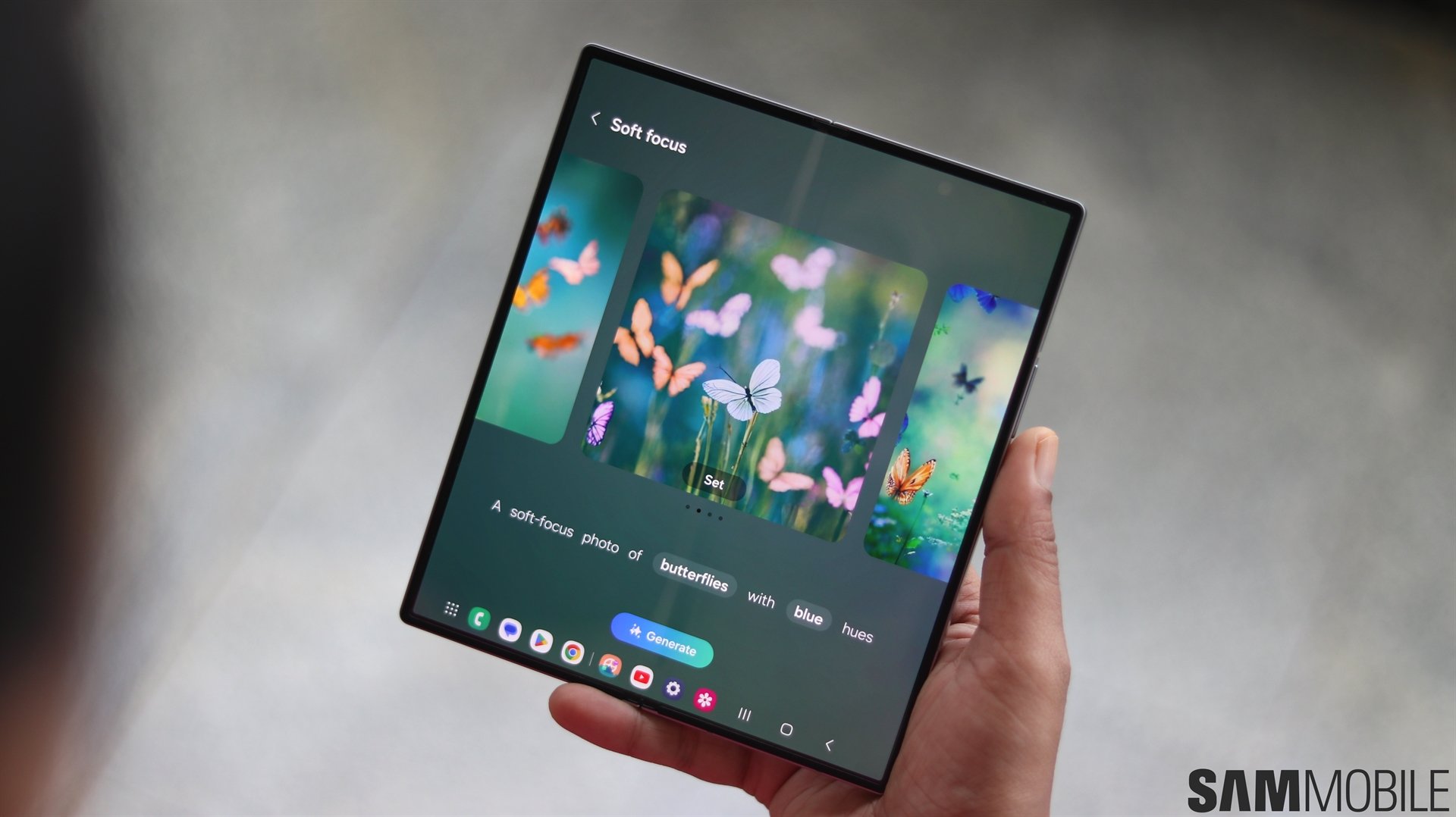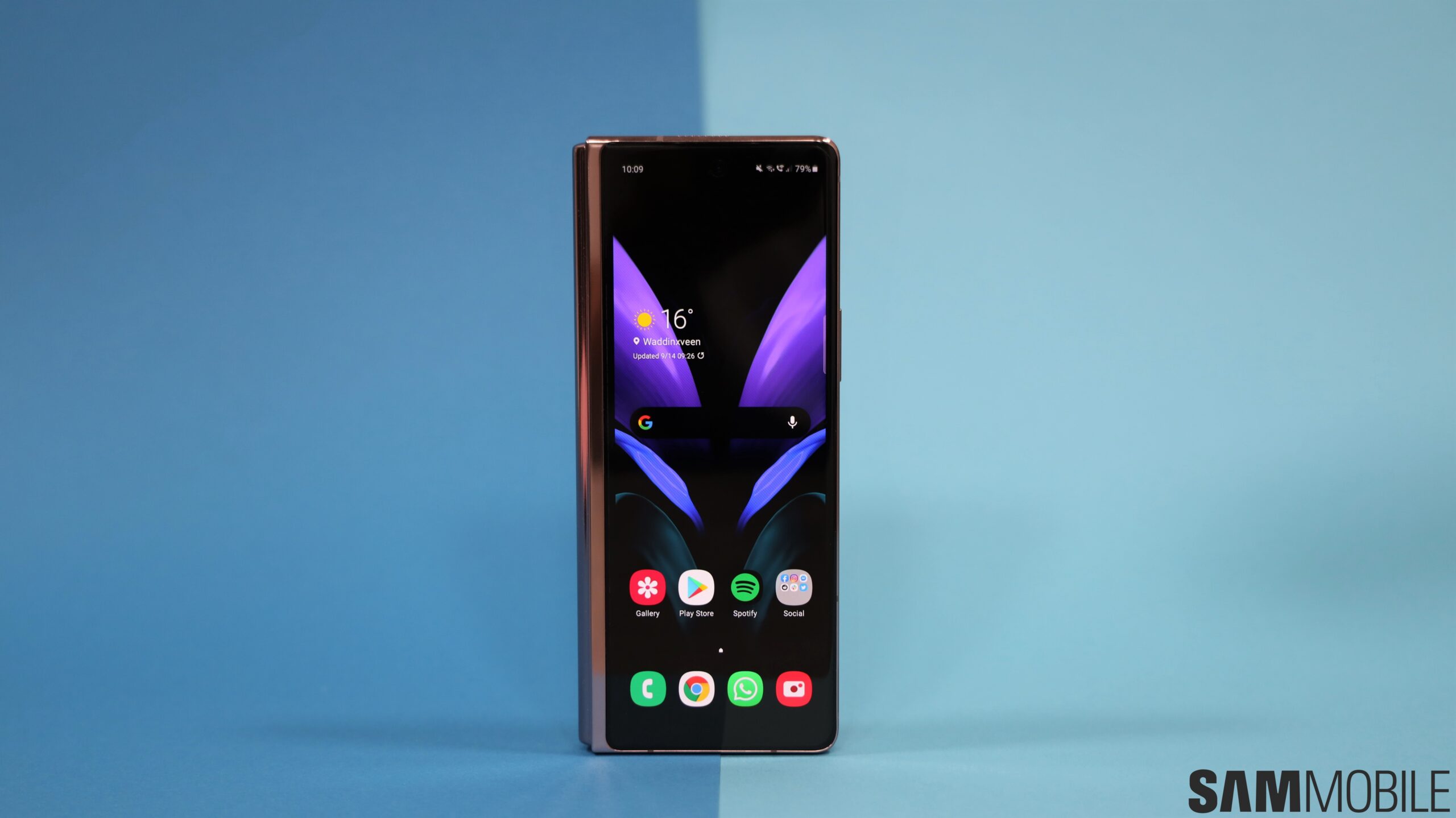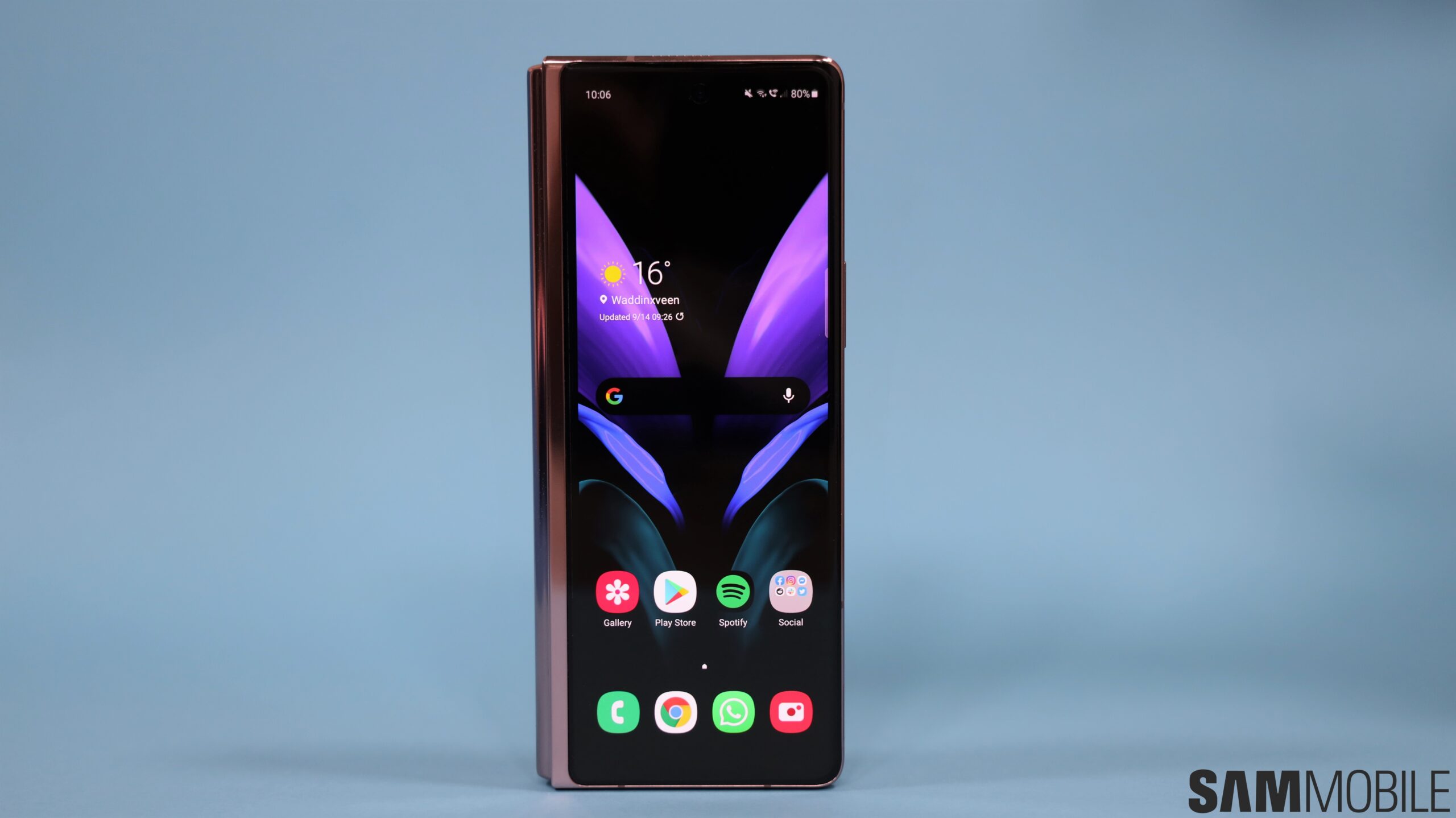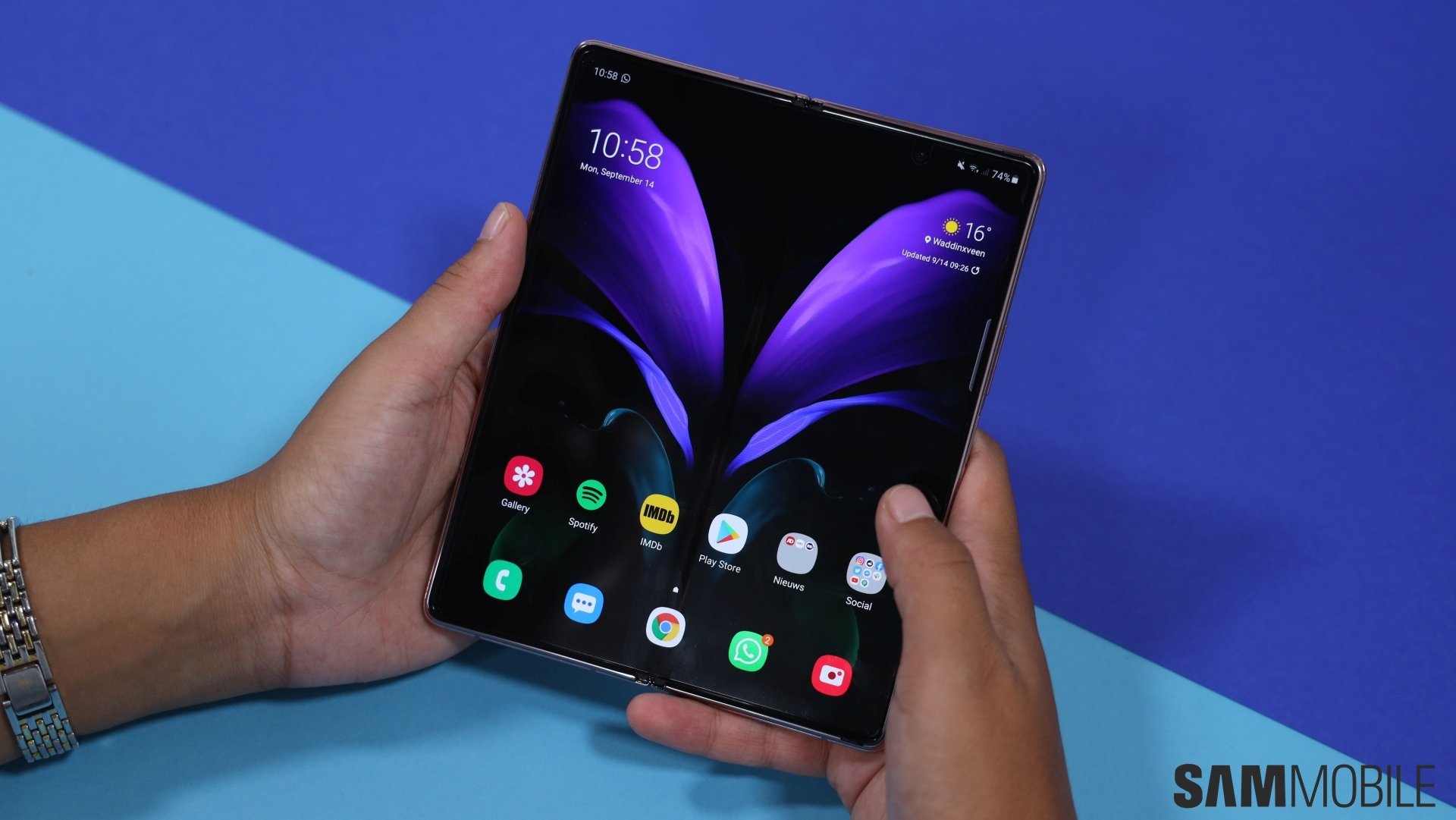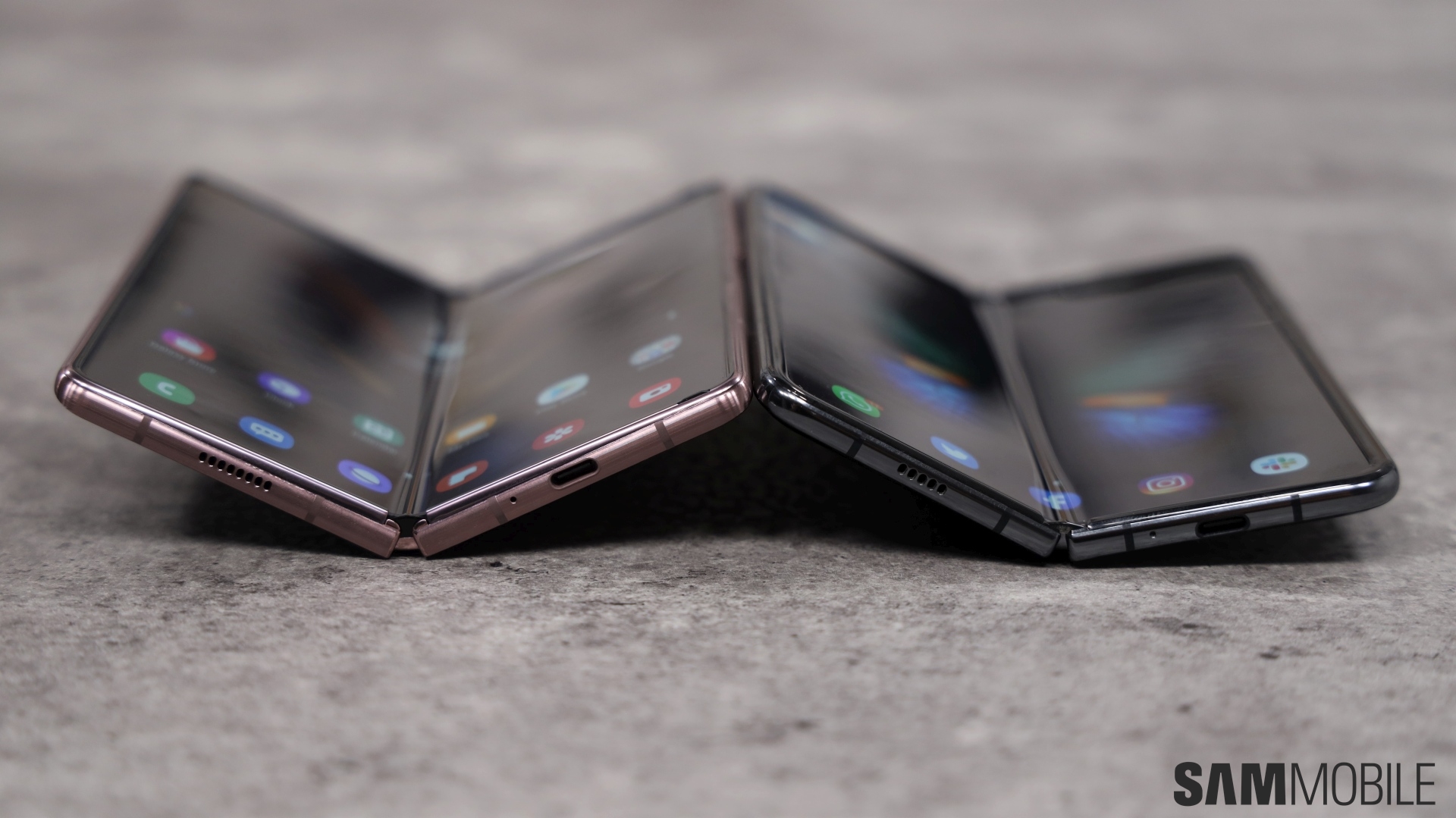
The original Galaxy Fold was already a highly ambitious smartphone-tablet hybrid so the question that’s on everyone’s mind is how did the Galaxy Z Fold 2 improve the formula? In several ways, it turns out, from software to hardware and design. Let’s have a look at what one year of development meant for Samsung’s foldable series.
Galaxy Fold versus Galaxy Z Fold 2: Design improvements
The most obvious design improvement introduced by the Galaxy Z Fold 2 lies in the enlarged cover display. It used to measure 4.6 inches when the Galaxy Fold came out, but now it clocks in at 6.2 inches. The panel has an Infinity-O camera cutout and its bezels are much thinner. Overall, it’s a lot more usable than before and it addresses one of the original model’s biggest shortcomings.
Similarly, the foldable display now measures 7.6 inches instead of 7.3 and it has an Infinity-O cutout instead of a protruding notch. Samsung claims that the bezels surrounding the 7.6-inch foldable display are now 27% thinner compared to the original Galaxy Fold.
The hinge was also improved in several ways. The gap between the two folding halves is now smaller and the hinge supports Flex Mode. Furthermore, the Galaxy Z Fold 2’s hinge employs new sweeper technology to prevent particles from entering the device through the gap between the display and the hinge. Sweeper technology was first introduced with the Galaxy Z Flip and therefore it’s missing entirely from the original Galaxy Fold. More so, Samsung claims that the Z Fold 2’s sweeper is even better than the Galaxy Z Flip’s.
Finally, with the launch of the Galaxy Z Fold 2, Samsung was able to make one of its earlier visions a reality.You might be able to recall that the original Galaxy Fold was supposed to be offered along with various color combinations for the hinge and the two folding halves. That didn’t come to pass but Galaxy Z Fold 2 owners can pick a color for the hinge, from metallic silver, red, blue, and gold.
Galaxy Fold versus Galaxy Z Fold 2: Software improvements
The Galaxy Fold shipped with One UI 2.1 while the Galaxy Z Fold 2 arrives with One UI 2.5 out-of-the-box. Aside from the newer UI version being better, Samsung continued to fine-tune certain Fold-specific software features such as App Continuity. It now supports 3 modes – folded, half-folded, and unfolded – similar to Flex Mode. And yes, the phone does support Flex Mode similar to the Galaxy Z Flip.
In addition, Multi Active Window now lets users run multiple windows of the same app simultaneously. It doesn’t work with every app and support is limited at launch, but it will continue to improve. There’s also Split Screen Capture, a new feature that lets users capture a screenshot of one of the apps opened in Multi Active Window, then paste, resize, and edit it in another. Combined with Multi Active Window, the new Split Screen Capture mode pushes the idea of multitasking and mobile productivity to a whole new level even when compared to the original Galaxy Fold, let alone a standard ‘candy bar’ smartphone.
Galaxy Fold versus Galaxy Z Fold 2: Hardware specs
An improved design and better software go a long way, but a sequel is meant to improve upon the hardware as well. The Galaxy Z Fold 2 did exactly that, but not on every single front. The most important hardware changes lie in the cover display and the foldable screen. As mentioned before, they’re larger, better, and as far as the foldable screen goes, it now has a 120Hz adaptive refresh rate like the Galaxy Note 20 Ultra instead of being limited to 60Hz like the Galaxy Fold.
This means that the screen can run at a refresh rate as low as 11Hz or as high as 120Hz. A low refresh rate is automatically applied when viewing static images or when reading ebooks, and this can lead to significant battery life improvements.
The Galaxy Z Fold 2 sports a newer chipset, namely the Snapdragon 865+ SoC as opposed to the Snapdragon 855 used by the original Galaxy Fold. The SoC comes with a more powerful Adreno 650 graphics chip, up from the Adreno 640.
As for the cameras, the newer Galaxy Z Fold 2 has a total of five sensors as opposed to six, but both selfie cameras are now embedded in the screens. The primary setup comprises a 12MP wide sensor, a 12MP telephoto lens, and a 12MP ultra-wide shooter instead of a 16MP one. The newer model has a single 10MP selfie camera on the inside and an identical cover camera.
It’s worth noting that although the original Galaxy Fold had 512GB of storage and 12GB of RAM, the Galaxy Z Fold 2 comes with 256GB and 512GB of built-in memory, and the same amount of RAM. But where the Galaxy Fold has UFS 3.0 storage, the Galaxy Z Fold 2 employs UFS 3.1.
Finally, the Galaxy Z Fold 2 measures 159.2 x 68.0 x 16.8mm when folded and 159.2 x 128.2 x 6.9mm when unfolded while the original Galaxy Fold measures 160.9 x 62.9 x 15.5mm and 160.9 x 117.9 x 6.9 when folded and unfolded, respectively.
Plenty of reasons to upgrade
In conclusion, the Galaxy Z Fold 2 seemingly offers plenty of reasons for an upgrade from the original model, as long as you can afford it. Most internal specs have improved and the larger cover display is a game changer. The addition of Flex Mode is a pretty big deal and the software has been refined further.
The flexible display has dropped the intrusive notch and it now supports 120Hz. The sequel even offers more color customization options in select markets. It no longer ships with a free pair of wireless earbuds but if you bought a Galaxy Fold, you already own one. Storage took a hit but 256GB at minimum should be enough for the majority of users.
Are you a Galaxy Fold owner? Do you think Samsung has done enough to make the Galaxy Z Fold 2 a worthy sequel, and will you be upgrading to the new model? Or perhaps you’re considering joining the foldable scene for the first time? Join us in the comment section below and let us know.
[modelcompare model1=”SM-F900F” model2=”SM-F916B”]
[modelinfo model=”SM-F916B”]
[modelinfo model=”SM-F900F”]














